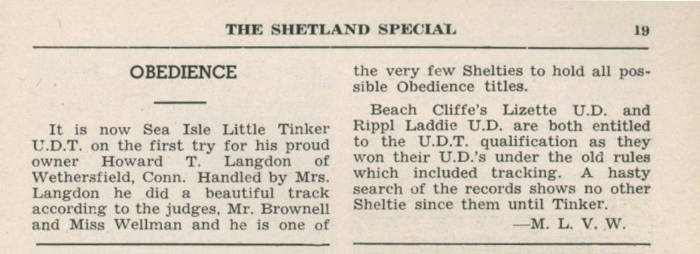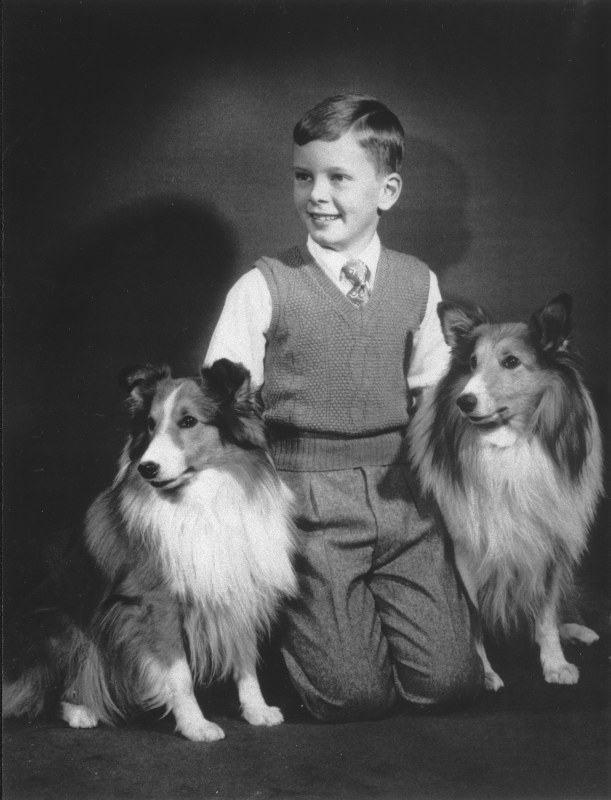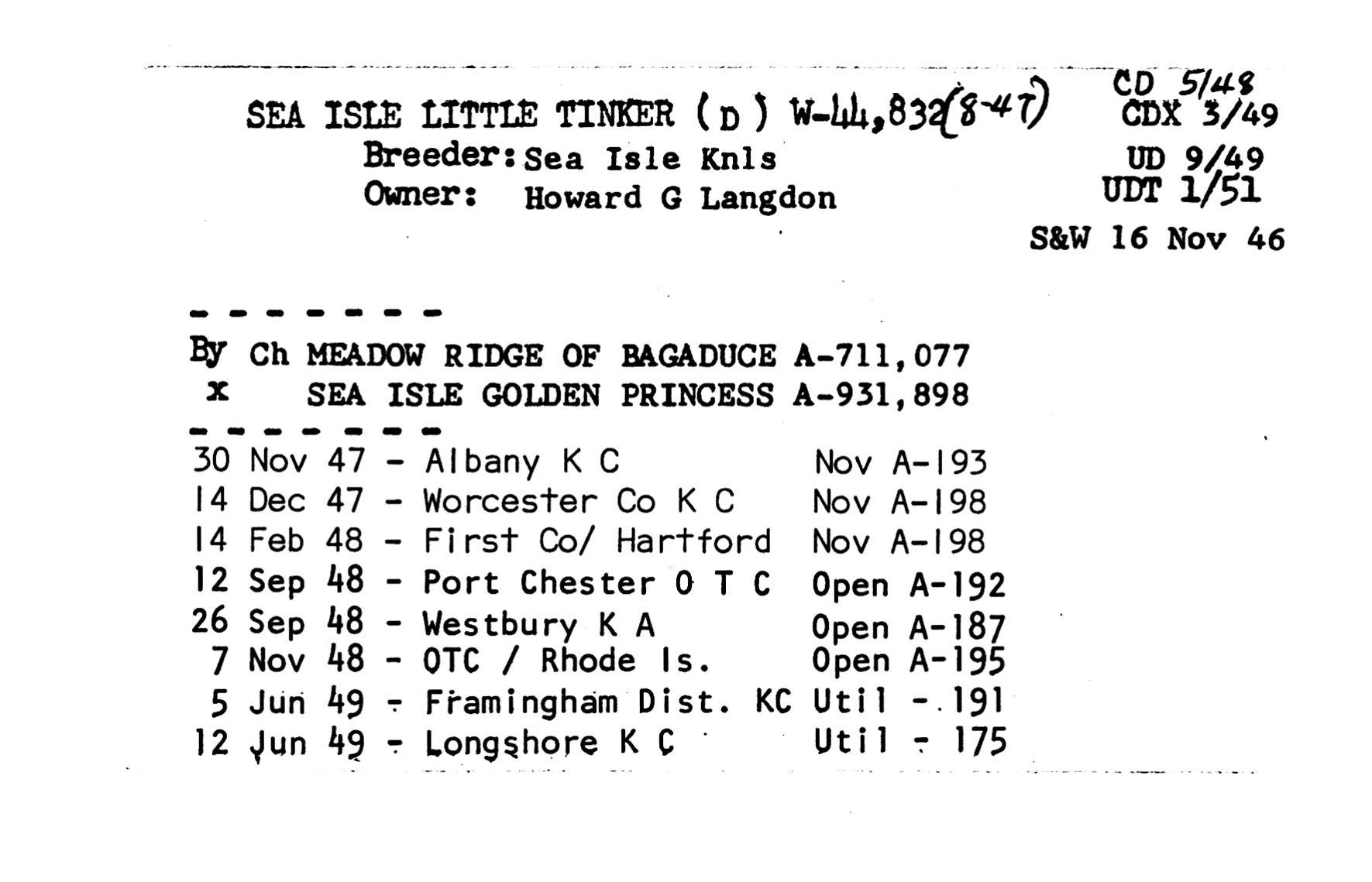Sea Isle Little Tinker UDT |
||
|
||
The First UDT Sheltie
Tracking was separated from Utility obedience in 1947Prior to October 1947, tracking was one of the exercises in Utility obedience. Although the tracking test could be held apart from the actual obedience trial, a dog needed to have passed a tracking test in order to be awarded the UD title. Two Shelties had passed Tracking Tests before 1947, but Sea Isle Little Tinker UDT was the first Sheltie to be awarded the TD as a separate title.
Obedience training with TinkerHoward and Carolyn Langdon first met Mary Van Wagenen of Sea Isle Kennels at the dog show in Hartford, Connecticut in February 1947. A week later they drove up to Vermont and brought home Tinker as a 10 week old puppy. The Langdons bought Tinker as a pet, but then discovered obedience training. Carolyn trained and handled Tinker to all his titles. She said his jumping was spectacular. Tinker was in the Novice Class at a show when a trainer on the sidelines commented that “women would never heel dogs as well as men with those skirts flapping in the dogs' faces.” Immediately Carolyn went out and bought her first slacks. She never trained in a skirt again, and her dogs got very excited whenever Carolyn put on her slacks. Tinker had just started training utility obedience when AKC introduced the directed jumping exercise. Carolyn said, “Old time trainers protested in vain that it was psychologically unsound to send a dog from his master, the purpose of obedience training being to teach him to stay close. At Hartford O.T.C. they did not know how to teach the exercise—some people gave up; others of us improvised.” Tinker learned the exercise uneventfully, and he earned his final Utility leg at the First Dog Training Club of Northern New Jersey on Jun 19, 1949. Teaching Tinker to trackWhen Tinker started his tracking, tracking training was in its early days, and no trainer had a tracking title on his dogs. Carolyn and Tinker were introduced to tracking at a one day session near Boston,, given by Jim Sharkey, a former Marine handler of WWII working dogs. Four dogs attended the session. “Sharkey” laid each dog a track between two stakes, gave the dog the scent from his glove, put the dog’s nose to the ground in a well-scuffed spot and urged him track. If the dog caught on, he pronounced the dog capable of tracking. If not, the handler was discouraged from continuing.
That one session was their only formal lesson in tracking. Owners got together with their dogs to practice, sometimes trespassing on a likely-looking field. Cattle tracks were ignored, and they were unaware of human cross-tracks, which sometimes presented a problem for the dogs. They later learned that the people in the Rhode Island Club were aware of this cross-track problem. The first TD and UDT SheltieIn tracking, Tinker worked with variable consistency. On his first attempt to obtain the needed “entry signature” (what we would call a certification track today), Tinker followed an animal scent under an abandoned house. He obtained his “entry signature” under "Cap" Herman Schendel, who was with the Hartford Obedience Training Club, and participated with Blanche Saunders in early obedience demonstrations at the Yankee Stadium. A few weeks later on November 19, 1950, he passed the tracking test held by the Obedience Training Club of Rhode Island, on his first attempt, in spite of gusty wind. His judges were Mr. Brownell and Miss Wellman. He was the first Sheltie to earn the new TD title. |
Sources:
|
Back To Top Of Page
|
This page was Copyright © 2008- Alicia Keegan Free random image script provided by JavaScript Kit |



